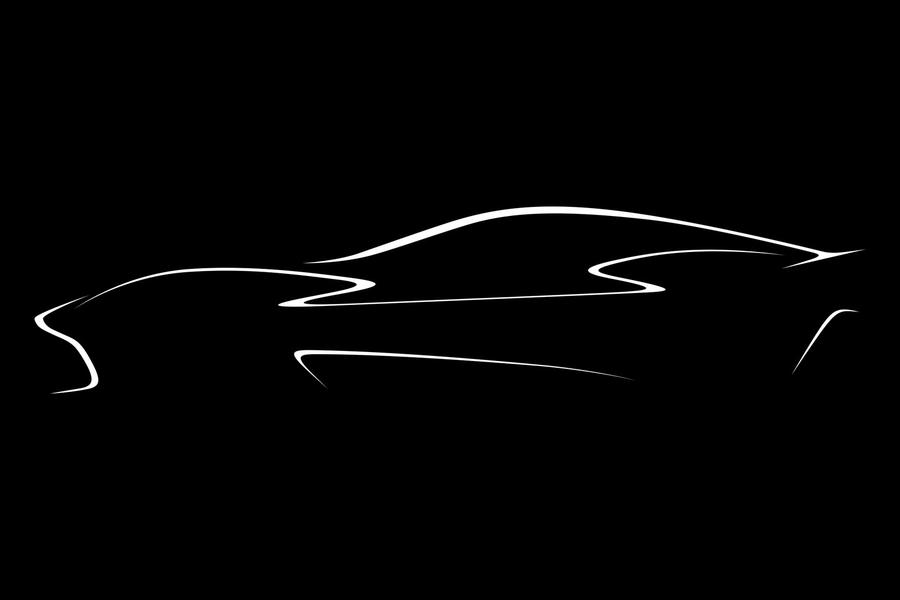US-based EV start-up to supply powertrain and battery components for new family of electric Aston Martins
Aston Martin’s electric era will begin with a new SUV in late 2025 powered by Lucid motor and battery technologies.
US start-up Lucid’s components will feed into Aston’s own bespoke modular battery-electric car architecture, which is set to underpin a range of models starting with the new SUV and followed by a GT by the end of the decade.
Aston Martin chairman Lawrence Stroll said that the deal with Lucid, confirmed on Monday (26 June) and previously reported by Autocar, had been more than two and a half years in the making and the US firm had emerged as the oustanding partner for Aston’s EV aspirations after a competitve tender process.
The structure of $232 million (£182m) deal sees Lucid take a 3.7% shareholding in Aston Martin, which has given £79m in equity to enable that shareholding. The balance to be paid in cash installments between now and 2026 and there is a further £177m to come from Aston to pay for the components as an effective minimum spend in what’s billed as a long-term supply deal.
Aston will subsequently not take forward a similarly-structured deal with other shareholder Mercedes-Benz that it had an option on. However, its existing supply deal with Mercedes-Benz for powertrains and electrical architectures was not impacted by the Lucid deal, and the EV platform would use a Mercedes electrical architecture.
Aston and Lucid also have a common investor in Saudi Arabia’s Public Investment Fund but Stroll said the firms were talking independently of this.
“After our due diligence, Lucid exhibited the best existing technology with the highest level of horsepower and the smallest battery height,” he said. As Aston only wants to have one EV platform to give it the option to launch a model into any segment, that last point is important as it will allow Aston to make the usually challenging sports cars using Lucid battery technology.
“The target for Aston Martin is to build the highest performance EVs and we found ourselves [with Lucid] of a similar mindset and very aligned. We are proud to be partners with Lucid.”
The start-up currently produces one model – the Lucid Air saloon – offering it with single-, dual- and tri-motor powertrains, of which the most powerful outputs more than 1200bhp. It says its current-generation drive units are individually capable of producing up to 670bhp while weighing slightly less than 74kg apiece.
![]()
Aston will get access to Lucid’s electric drive units, which house the motor, invertor and transmission in an integrated unit. Lucid boss Peter Rawlinson said that these have 9hp per kg of power density, which is more than double Tesla and eight times that of Hyundai’s motors. The firm is also working on motors for racing that have 17hp per kg.
Aston’s electric cars will use four motors, with power outputs potentially up to 1500bhp. “Aston will use four motors, we’re three,” said Rawlinson, who as well as being Lucid CEO is also its chief technology officer. “Aston Martin are taking it to the next level.” Four motor technology will see a twin-motor front axle that will be unique to Aston Martin.
Lucid will also supply battery cells and modules, and Aston will then use them in a battery pack of its own design. All components will be built in Lucid’s factory in Arizona and shipped to the UK.
Rawlinson said all technology was derivative of that on the Air but with “significant software changes”. He added: “The main difference is in thermal integration and battery layout. It will be a different shape battery pack with a software difference.”
Aston technical chief Roberto Fedeli hoped to have the first electric Aston drivetrain working on a test bench by the end of the year and the first mule running on the roads by the start of 2024.
The architecture the powertrain will be used in will be a “fully flexible BEV platform, modular in height and wheelbase”, said Fedeli, who said the platform was being designed to last well into the 2030s. Aston will be able to make a sports car 2cm lower than the current 1273cm Aston Martin Vantage, something enabled by the compact size and design of the Lucid cells. “The most important one is the lowest one,” said Fedeli, in reference to the need for Aston to continue to make low, sports cars.
However, the first Aston EV will not be a sports car but an electric SUV crossover, previewed in a teaser sketch released alongside the Lucid news. By 2030, an electric GT will likely have followed but sports car models were less likely for now.

“If you look at the [EV] market evolution between now and 2030, the growth is in GT and SUV,” said Aston’s chief brand and commerical officer Marco Mattiacci. “We’ve established a good foothold in SUVs with DBX and have been doing GTs for 110 years. [We’ll] look at those segments first.
“Then we talk to customers, and see customer appetite; this will depend whether we do a sports car. Data and credibility: those elements will shape this.”
Before the electric SUV launches, Aston’s first forary into electrifed powertrains will be with the Aston Martin Valhalla mid-engined supercar. A 4.0-litre twiin-turbo V8 engine will power the rear wheels and twin electric motors of Aston’s own design for the fronts. The combined power output of this car was 1004bhp, said Fedeli.
Source: Autocar
